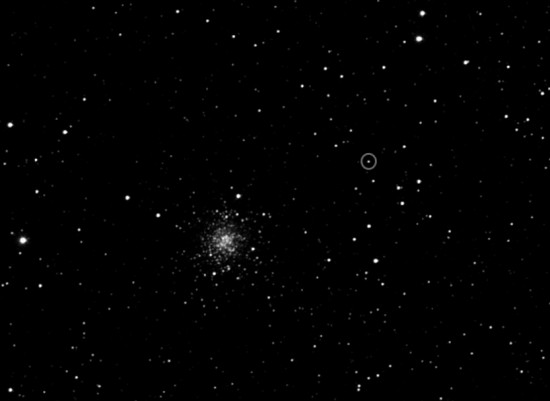Apr 2, 2014
The Rosetta Cometary Probe will soon arrive at its destination.
On March 2, 2004, the European Space Agency (ESA) launched the Rosetta Cometary Probe on a rendezvous mission with 67 P/Churyumov-Gerasimenko, a short period comet that will enter perihelion in August of 2015. One year after launch, Rosetta received a gravity assist from Earth in order to boost its speed and conserve fuel. In February 2007, Mars kicked-up the space probe’s velocity and swung it back around Earth again. In November 2009, Rosetta circled Earth for the last time in order to receive its final push into deep space.
After a ten year journey, Rosetta, with its landing vehicle known as Philae (Greek for “Kisser”), awoke from deep space hibernation in January 2014. ESA is now in the process of powering up various instruments in preparation for orbit around the comet. So far, everything appears operational, and its onboard camera recently captured the first image of its target.
An ironic aspect to the Rosetta mission is the construction of its lander. In order to make contact with the comet, Philae will fire a harpoon at the surface and then reel itself in. It then attempt to anchor itself with ice screws, so that it will not float away. The gravity on 67 P/Churyumov-Gerasimenko is so low that any upward impetus would send the lander back into low orbit.
Harpoons and ice screws are methods of attachment based on the conventional view of comets. In the minds of astrophysicists, comets are icy dirtballs, loosely agglomerated from “primordial material”. Comets are thought to be denizens of a remote region of the Solar System known as the Oort cloud, a sphere of frozen material near absolute zero, located more than 1.5 X 10^10 kilometers from Earth (maybe farther). It was named for Dutch astronomer Jan H. Oort.
Oort inferred the existence of the cloud because he studied 19 different long period comets. Since long period comets seem to arrive from deep space and exhibit extremely elongated elliptical orbits, he could not imagine any other solution than a cold repository of objects beyond astronomical observation. Note that short period comets, like 67 P/Churyumov-Gerasimenko, are known to revolve in orbits that do not exceed the distance to Jupiter.
More than six trillion cometary bodies are supposed to inhabit the Oort cloud. They are barely held in place by the Sun’s gravity, so some theories state that if stars or giant masses of dust and gas pass too close, tidal forces can change their orbits, and they will plunge into the inner Solar System. Conversely, they might be drawn out into interstellar space.
As many Picture of the Day articles, presentations by Wal Thornhill, videos by Dave Talbott, and research by other Electric Universe advocates demonstrate, comets are not the slushy snowballs that astronomers seem to think they are.
In an Electric Universe, comets are most likely rocks moving rapidly through the Sun’s force fields. They develop plasma sheaths that can evolve into comas, sometimes millions of kilometers in diameter. Electric arcs connect their surfaces with the Sun’s electric field, and generate extremely high temperatures in isolated spots. X-rays and extreme ultraviolet light have been detected radiating from comet Hyakutake, for example.
Comets pass through a differential electric potential as they accelerate toward the Sun. The variable electric field can cause visible, glow discharges. Rather than “dirty snowballs” or even “snowy dirtballs”, comets are electrically active, solid bodies. Philae’s harpoon could very well glance off the hard surface, and, if it does manage to penetrate the regolith, ice screws as anchors might be an inadequate attachment device.
Analyses of cometary material captured by missions like Stardust are more easily understood electrically than within theories that depend on gravity and sublimation. Blackened and burned nuclei; craters and rocky landscapes instead of ice fields; narrow, energetic jets; ion tails pointing toward the Sun; sulfur compounds that require high temperatures to form; and an abundance of ultra-fine dust all point to electricity as an activating force. Most important of all, water vapor is more prevalent farther away from cometary nuclei than close in—exactly opposite to the water ice and frost theory.
Stephen Smith













